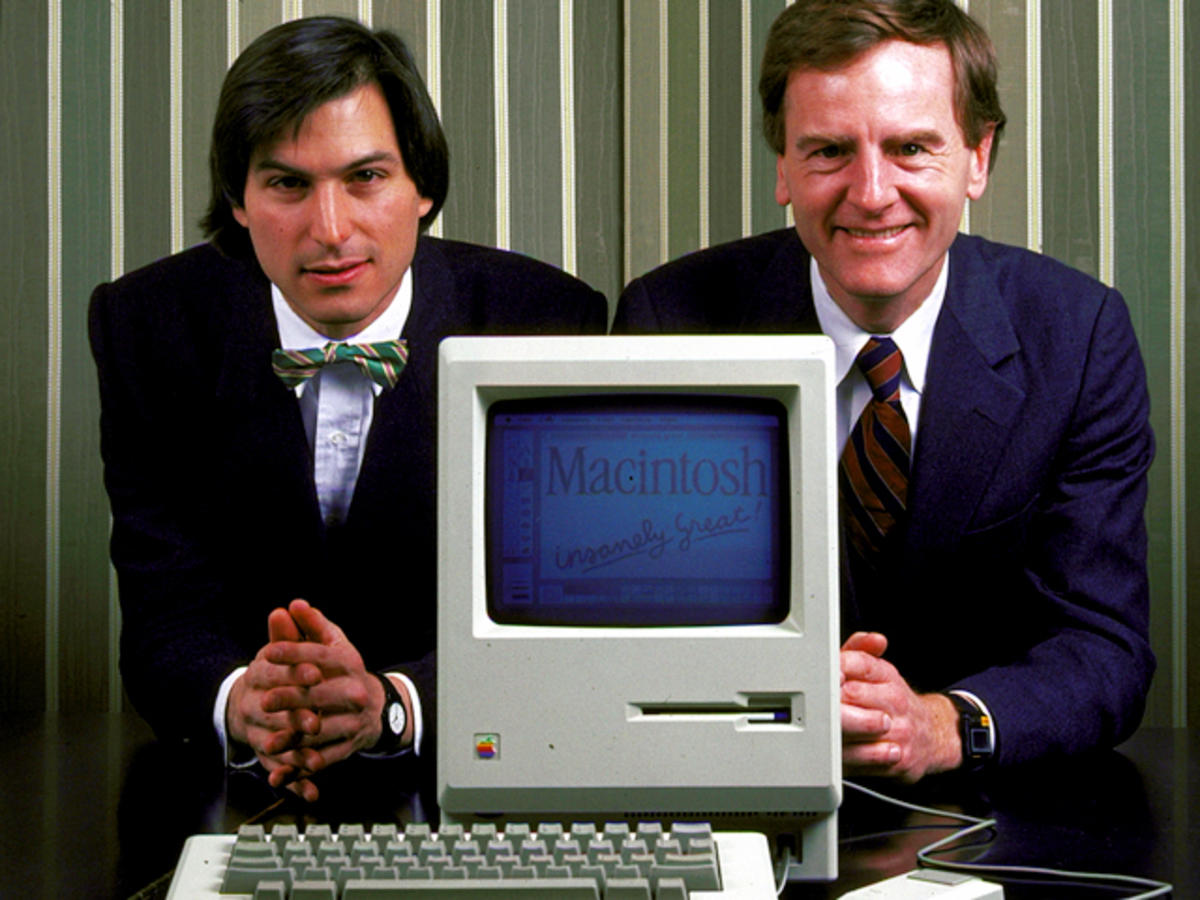By
Mark DiMassimo | 05/02/2018 | in

I recently discovered in reading my copy of The Daily Drucker that I’ve long shared one of Peter F. Drucker’s main management philosophies – the concept of two-track planning.
For decades, I’ve heard the following sentiment.
“We can’t solve your problem because we haven’t done our strategic work yet.”
When I worked at other agencies, I always thought this to be the ultimate bureaucratic blindness.
Building the BRAND while we build the BUSINESS.
This is the core promise of our agency, DiMassimo Goldstein. This is the experience our clients have bought when they’ve bought us.
Not: “First we’ll build the brand, then we’ll build the business.”
Not: “First we’ll build the business, then we’ll build the brand.”
Instead, we do both, and simultaneously. Like you do!
Sometimes this translates as “Building the brand while lowering the cost of acquisition.”
Sometimes it’s “Building the brand while driving sales efficiency.”
Sometimes it’s just “Growing the business and the brand.”
Our clients never wait months to see returns from an agency engagement. We typically deliver measurable revenue within the first 30 days, and we don’t have to sacrifice future success to do it.
Drucker calls this the harmonization of the immediate and long-range future, going on to state that “a manager must, so to speak, keep his nose to the grindstone while lifting his eyes to the hills.”
At DiGo, we call this practice two-track planning, and it’s implemented in everything we do. Imagine two columns on a page, the left titled URGENT and the right titled IMPORTANT.
Some urgent things are truly unimportant, but some we term “The Runway.” The board meeting coming up. The quarterly results reporting. The partner’s meeting.
If a plane doesn’t get aloft by the end of the runway, it doesn’t matter how good the food service and the movie were going to be. There are things you just need in the short run to make the long run possible. Often these things include results. That’s the Runway.
And, we don’t lose our strategic heads. We see the long-term opportunities in urgent problems.
And we manage them both, so that our clients can move forward, paying for tomorrow’s opportunities with today’s wins, all while strategically planting the seeds that ensure growth for the future in a time-starved world.
Let’s talk about inspiring action in the short and long term!
By
Mark DiMassimo | 12/13/2017 | in

Inspiring Action.
People pay us to get people to do things.
And we’re really good at it.
It’s an awesome responsibility.
Changing people’s behavior.
Their decisions and habits.
That’s why we’re not a “performance marketing” agency. Or a “digital” agency. Or a “direct” agency.
That’s why we’re an Inspiring Action agency.
That’s why we only incite more inspiring actions.
And more empowering habits.
And why we use our powers to ignite growth only in organizations that promote those kinds of behaviors.
But responsibility isn’t the only reason.
People bet their careers on our results every day.
We have learned by long experience that inspiring action simply works better.
We learned by being in big, siloed agencies that undermined our results by separating us.
We learned by proving it through results.
That the two most important factors for igniting growth are Inspiration and Action.
Inspiration – is there an idea or experience at the core of the brand that inspires unreasonable passion.
Action – is there urgency and ease and flow and momentum in the funnel of actions that create even deeper engagement and customer value.
Inspiring Action ignites growth by changing behaviors. Each one of us made an inspiring decision to come together.
To use what we’ve learned to inspire action for worthy organizations.
By
Team DIGO | 12/05/2017 | in
We can help people change their decisions and habits in ways that empower and delight them.
We combine the findings of behavioral economics, mobile clinical interventions, persuasion design, direct marketing, CRM, and decades of A/B split testing and optimizations into an integrated practice of behavior change marketing.
This video of our Chief recapping his time at the Yale Behavioral Economics Intensive dives into the topic in greater detail:
Want to learn even more about Behavior Change Marketing? These articles are a great place to start:
Behavior Change Science Update: Moral Reframing
What’s different about the one-in-a-thousand organization that thrives and outperforms? That builds a brand and inspires a movement?
Inspiring Action Brand of the Month: Duolingo
If you and your team are trying to build an inspiring action brand, or know anyone else who may find this helpful, feel free to share this amongst them. If you want to join the conversation yourself, reach out to us on twitter, we’d love to hear from you.
By
Mark DiMassimo | 11/06/2017 | in

When Steve Jobs was trying to hire John Sculley, then the CEO of Pepsi, to come and work with him at Apple, Jobs said,
“Do you want to sell sugar water for the rest of your life, or do you want to come with me and change the world?”
Sculley did leave Pepsi and join Jobs at Apple, becoming CEO. At first, it was a lovefest, but over time they clashed, leading to Jobs’ ouster from the company he had founded.
It turned out they didn’t share the same values.
For Jobs, changing the world was a moral imperative. For Sculley, the technology business was a cool consumer products business that was first and foremost a business.
This cautionary tale is a good way to introduce the topic of moral reframing. It contains all the tensions a behavior change marketer must resolve in order to successfully use this technique.
The news is that Robb Willer, a Stanford sociologist, has found that an effective way to persuade people in politics is to reframe arguments to appeal to the moral values of those holding opposing positions (https://news.stanford.edu/2015/10/12/framing-persuasive-messages-101215/).
We know from testing and experience that similar reframing works outside of the political realm as well.
For example, let’s say my company has invented a new way to get you to exercise more.
I believe that if you were to try my product, you would exercise more, be healthier, live longer and feel more energy and vitality.
In other words, in my moral universe, exercise is about health.
But, maybe my audience cares about cool experiences and being part of an “in” crowd. If I reframe my presentation of my innovation in that frame, I’ll make many more sales. My persuasive communication will be much more successful, creating much more behavior change.
If we design our experience around this frame, we’ll create much more sustainable behavior change.
So, why doesn’t this happen more often?
“Moral reframing is not intuitive to people,” Willer said. “When asked to make moral political arguments, people tend to make the ones they believe in and not that of an opposing audience – but the research finds this type of argument unpersuasive.”
Most people tend to pitch from their own frames of reference, and moral frames are the least flexible.
But, understanding the audience and employing the audience’s frame of reference is the core of successful communication.
So, let’s get back to that Steve Job’s story.
Did he know something about Sculley? Did he know that Sculley had achieved wealth, respect and power and was now looking for a legacy?
Very likely. Jobs was an excellent salesman.
Or, did Jobs just speak from his own moral frame and it happened to work in this case?
Jobs was a true believer, so this is likely.
I tend to think it was both. Jobs thought he’d found someone who was ripe to be influenced by a moral frame they could share.
This is the tension between leadership and sales, between brand and response, that must be managed.
Excessive personalization tends to obliterate integrity in the brand. By attracting people who don’t share your values, you end up with a customer, an employee – or in Job’s case, a boss – who doesn’t really share your values.
And, bad things happen.
One approach that works particularly well in politics is to look for a larger frame. This is a way to get beyond my frame or your frame.
For example, Lincoln believed “if anything is evil, slavery is evil.” Others believed “slavery is our God-given institution,” while still others believed “slavery is an evil, but it’s not worth risking war over.”
Lincoln looked for a new moral frame that could be shared by more of his audience. He found several. The first was: “A house divided against itself cannot stand.” This, from the Bible, spoke to a broad swath of Lincoln’s audience. He employed the frame he later used in the Gettysburg Address, when he argued that the Founding Fathers had already dealt with the issue of slavery, that they had worked to set it “on a course of ultimate extinction.”
At the time, respect for the Founding Fathers was very great – it was a moral frame shared by a large percentage of the audience.
So, in sum:
- Speaking from your own moral frame is integrity, but it is often ineffective integrity.
- Speaking from your audience’s moral frame is more effective, but it can be manipulative and hurt the brand.
- Finding a frame that can include both the brand’s values and the audience’s too ultimately creates the most sustainable behavior change while it builds the brand.
For our client, Weight Watchers, which believed in healthy weight, healthy lifestyle and healthy community and then found that their audience had shifted focus to healthy lifestyle, we found that their frame was already broad enough to adapt, and all that was needed was to refocus the members themselves.
For Sallie Mae, we saw that “Let’s Make College Happen” could unite all the constituencies – parents, students, guidance professionals and Sallie Mae employees – all of whom are focused on making college happen.
TradeStation was obsessively focused on the most powerful trading technology while living the Miami lifestyle. When it became clear that the audience cared about both, rather than just the awesome technology, TradeStation widened the marketing frame, and the result has been like a beautiful big blue wave.
Frame like a master, and you’ll love the results.
This has been your Behavior Change Science Update: Moral Reframing.
Happy #InspiringAction
By
Team DIGO | 09/21/2017 | in

The most creative activity in many agencies is filling out time sheets.
For eighteen years, we have never done one. Here’s why:
1) We don’t want to reinforce the silly idea that what we sell is time. We sell results.
We take that seriously and stick to it. Our compensation agreements align with it as well, accepting risk and reward for creating marketplace results.
2) We don’t want the moral or legal hazard of a practice that is almost universally abused. A process that at best is a waste of the very time it purports to record and at worst is a fraud. Sometimes accountants are creative people, but creative people are rarely accountants.
3) We want to spend all of our time and energy on the stuff we’re good at, the things that return the most value for our client’s dollar. We always strive to deliver much more value than we capture in revenue. And our agreements, often with lower fees and bonus for market success, bear this out.
4) No one benefits from a culture of nickel and diming over time. Not clients, who will feel hesitant to use the team to the fullest extent for fear of additional changes. Not agency people, who come to value their contribution in billable hours rather than in winning work. We never charge more for “going over” hours. Because we don’t measure hours, we measure value.
By
Mark DiMassimo | 07/14/2017 | in

We marketers spend so much time on our marketing, we can be forgiven for thinking that it’s the first and last word about the brand.
Perhaps there was a time when this was more or less true. Not today.
Today, the conversation about brands, services and products is never more than a couple of clicks away. People have more tools than ever to find out what other people really think about the things we sell. Advertising is a smaller and smaller part of the conversation.
That’s why an integrated growth plan must start with the behaviors and beliefs of the audience. It needs to embrace the entire brand experience. The customer journey becomes the road map. By prioritizing the touch points with the greatest leverage, real results improvement can often be achieved in short order.
So, what about the 57%? That’s the part of the buying process that a prospect typically engages in before they talk to someone from the company. The other 43% is important, but the whole 100% is where the winners play.
By
Mark DiMassimo | 07/14/2017 | in

People pay us to get people to do things.
Isn’t that what you get paid for too?
Think about it. Whether you’re making a product, delivering a service, designing, marketing, innovating or financing – doesn’t the result happen only when you get people to actually do something different?
Actions are the fundamental currency. No actions, no cash.
So, success in business – and in achieving any worthy end – is a battle between manipulation and inspiration.
Manipulation is when we use tricks to get people to do things.
Inspiration is when they do those things because those things are meaningful and satisfying to them.
A business can be built on manipulation for a while. Offers. Urgency. Price manipulations. Sales. Scarcity. Emotional hyping. There is a whole business literature of tricks. Direct and interactive marketers have proven them. Persuasion designers have honed them. Behavioral economists have proved them in double-blind studies.
Manipulation works. For a while.
But manipulation doesn’t satisfy. In fact, it sucks meaning. Organizations that rely too heavily on manipulations build a house of cards, without coherence, loyalty or passion.
Inspiration, as Simon Sinek has said, starts with Why.
When people are doing because they are inspired to do, they value their own actions differently. We saw this when we attracted more customers for an online broker by offering a stuffed monkey (really) than by offering $350 dollars cash, just for signing up.
The monkey meant, “I’m in this crazy tribe.”
The money meant, “I’ll take the bribe.”
Which do you think acquired more valuable customers? Correct. The monkey.
Which do you think acquired more customers in the first place? Also, the monkey.

Most people are surprised by that. Knowing all I do about inspiring action, I was also surprised.
This broker built an incredibly powerful and valuable brand. It inspired passion that converted into fast growth, intense engagement and rock solid loyalty.
Want a metric to measure and manage this by? Call it your Inspiring Action Quotient.
How much do you lead, market, attract, convert and build through Inspiration? That’s the numerator, the number on top.
How much do you manipulate in order to generate the actions that grow your business? That’s the denominator.
Inspiration over Manipulation.
Inspiration/Manipulation = Inspiring Action Quotient
The higher your score, the more brand value you’re building, the brighter your future.
Simple and difficult as that.
Now let’s inspire some action.
By
Team DIGO | 12/04/2014 | in
INSPIRING ACTION.
You can impel action without inspiring it.
Tyrants do that. So do frauds.
But, if your action isn’t inspiring,
then all the actions will never add up to something greater.
All the clicks, hovers, registrations, deposits, sales, subscriptions, shares, visits…
Wasted.
That may work for a while, but never works in the long run.
Don’t be fooled by short-term results. Many failed regimes and business models had excellent short-term results.
Determine never to merely invite, tempt, seduce, compel or incentivize action when you can inspire it.
It’s the only way to meaningful actions, relationships and organizations.
Inspiring action.
When first,
Inspiring is a verb
And then is an adjective
is the only way.
When you build with
Inspiring Action
What you do means so much more
Than what you say.








